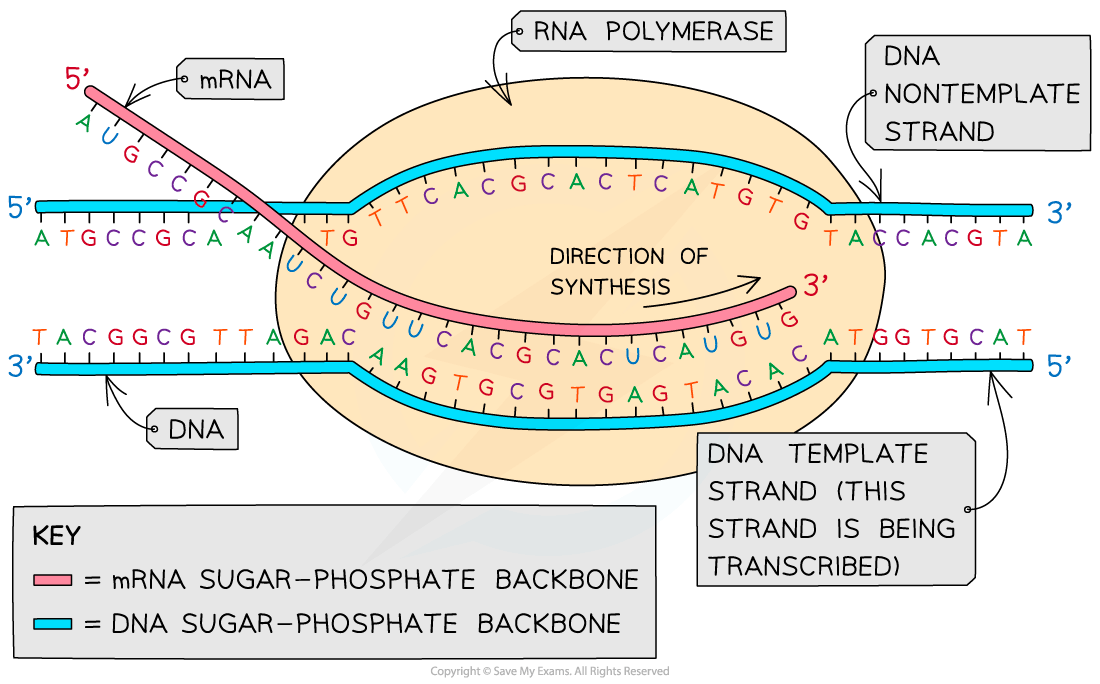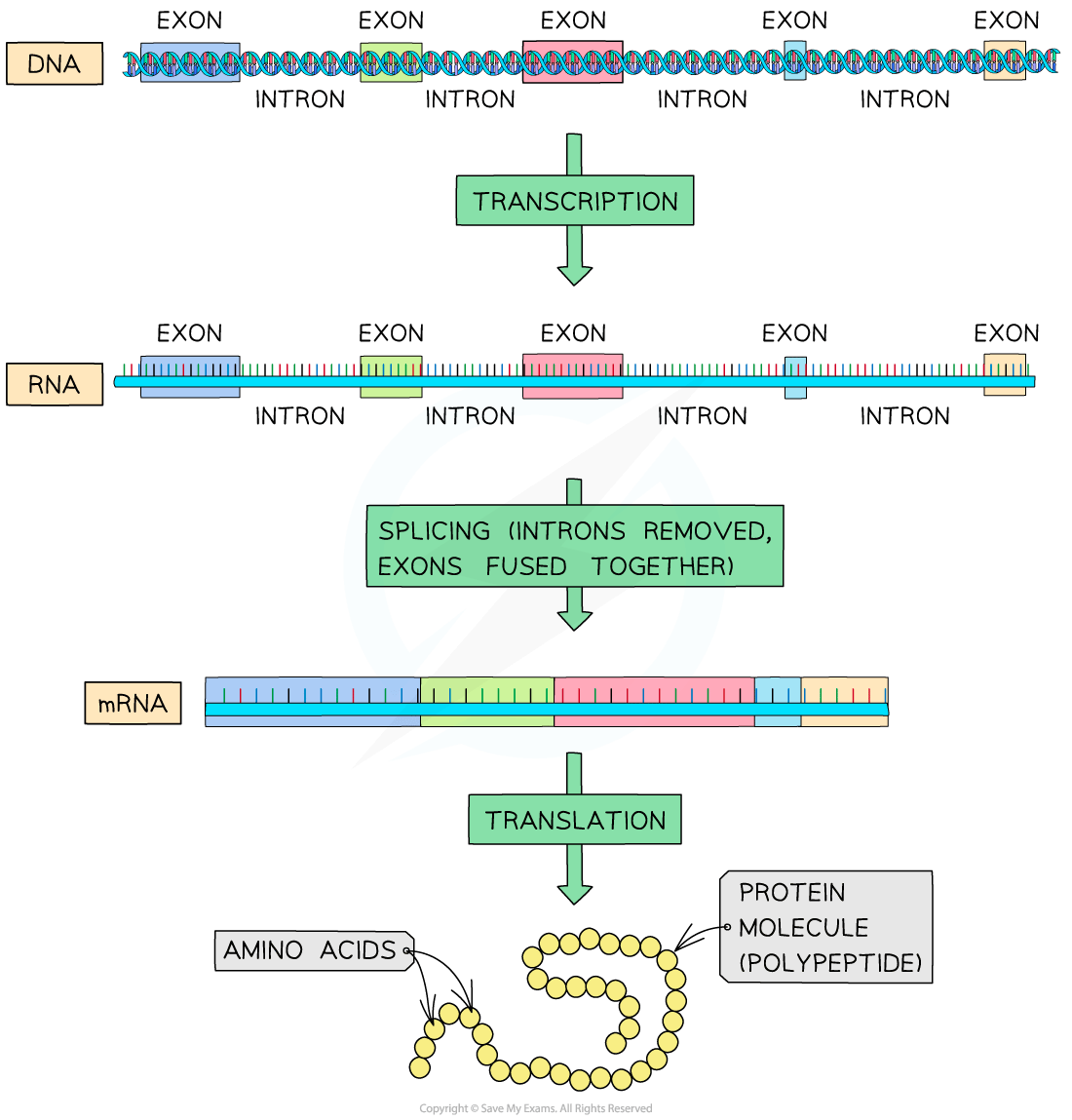Transcription (Cambridge (CIE) A Level Biology): Revision Note
Exam code: 9700
Template & non-template strands
In the transcription stage of protein synthesis, the section of the DNA molecule where the gene is located (the gene coding for a particular polypeptide) unwinds
The hydrogen bonds between the complementary base pairs break, causing the two DNA strands to ‘unzip’
Free activated RNA nucleotides then pair up with the exposed bases on the DNA molecule but only with those bases on one strand of the DNA molecule
This is the strand that is transcribed to form the mRNA molecule
This strand of the DNA molecule is called the template strand or the transcribed strand
The other strand of the DNA molecule is not transcribed
This strand is called the non-template strand or the non-transcribed strand

Examiner Tips and Tricks
The mRNA codons have the same base sequence as the non-transcribed strand, and the tRNA anticodons have the same base sequence as the transcribed strand (except that Thymine in the DNA strands is replaced by the base Uracil in mRNA and tRNA).
Post-transcriptional modification
Within eukaryotic genes, there are both coding and non-coding sequences of DNA
The coding sequences are called exons
These sequences will eventually be translated into the amino acids that will form the final polypeptide
The non-coding sequences are called introns
These sequences are not translated (they do not code for any amino acids)
When transcription of a gene occurs, both the exons and introns are transcribed
This means the RNA molecule formed (known as the primary transcript) also contains exons and introns
As the introns are not to be translated, they must be removed from the RNA molecule
The exons are then all fused together to form a continuous RNA molecule called mature mRNA that is ready to be translated
This process is sometimes called ‘splicing’ and is part of the process of post-transcriptional modification (referring to the modification of the RNA molecule after transcription but before translation occurs)


Unlock more, it's free!
Did this page help you?